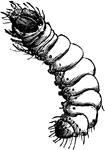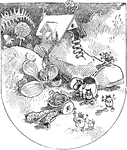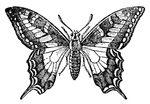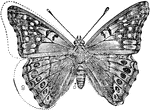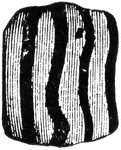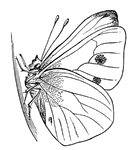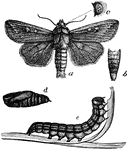
Army Worm
"Army-worm (Leucania unipuncta), about natural size. a, male moth; b, abdomen of female; c, eye; d,…
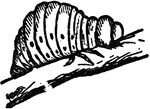
Colorado Beetle Larva
"The Colorado Beetle is a beetle first described by Thomas Say, in 1824, from specimens found by him…

Caterpillar of the Brown-Tail Moth
The caterpillar of the brown-tail moth is black with warty tubercles. The caterpillar emits tufts of…
Emperor Butterfly Larva
The dorsal view of the larva of the Tawny Emperor (Asterocampa clyton), a brush-footed butterfly.

Emperor Butterfly Pupa
The lateral view of the pupa of the Tawny Emperor (Asterocampa clyton), a brush-footed butterfly.
Black Swallowtail Butterfly Larva
Papilio Asterias, or Papilio Polyxenes. Bright green caterpillar with broken black bands.

Larva of Charaxes Jasius About to Change to a Pupa
"It lives on the arbutus, a shrub common enough on the hills and mountains of the coast of the Mediterranean."
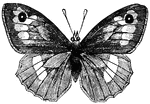
Meadow Brown (Satyrus [Hipparchia] Janira)
"Common during the months of June and July in the woods and fields."
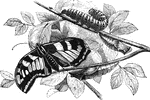
Stages of Development of a Butterfly
"Butterfly, Grub or Caterpillar, and Pupa or Chrysalis" — Goodrich, 1859
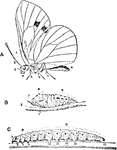
Three Stages of Cabbage Buterfly
A sequenced illustration of the cabbage butterfly undergoing metamorphosis. The butterfly starts out…

Fallweb Worm Caterpillar
An illustration of a fallweb worm caterpillar. Fall webworm, Hyphantria cunea, is a moth in the family…

Fallweb Worm Caterpillar
An illustration of a fallweb worm caterpillar. Fall webworm, Hyphantria cunea, is a moth in the family…

Fallweb Worm Caterpillar
An illustration of a fallweb worm caterpillar. Fall webworm, Hyphantria cunea, is a moth in the family…

Front Half of a Caterpillar
Front half of a caterpillar. Labels: a, opening air tubes, a pair of which are shown in black at the…

Hairy Caterpillar
Caterpillars are an insect that is cylinder and is divided by rings into 13 segments. The hairy caterpillar…

Io Moth Caterpillar
An illustration of a Io moth caterpillar. The io moth (Automeris io) is a very colorful North American…

Large Cabbage Butterfly Caterpillar
Caterpillar, larvae of the butterfly, are harmful to plants. These caterpillars sucker feet on the hinder…

Processionary Caterpillars
"If the guide stops a moment all the followers halt; if he continues the route, they all hasten after…
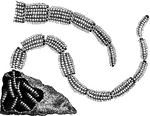
Processionary Caterpillars
"If the guide stops a moment all the followers halt; if he continues the route, they all hasten after…
Double-Toothed Prominent Caterpillar
The caterpillar stage of the double-toothed prominent (Nerice bidentata) showing its serrated back.
Smooth Caterpillar
The body is cylinder and divided by rings into thirteen segments. The smooth caterpillars don't have…

Tent Caterpillar Cocoon
An illustration of a tent caterpillar cacoon. Tent caterpillars are moderately sized species in the…
Tent Caterpillar Eggs
An illustration of tent caterpillar eggs. Tent caterpillars are moderately sized species in the genus…

White-marked Tussock Caterpillar
Orgyia leucostigma, the White-marked tussock moth, is a moth in the family Lymantriidae. The caterpillar…
Yellow Woolly Bear Caterpillar
An illustration of a yellow woolly bear caterpillar. The Yellow woolly bear caterpillar, Spilosoma virginica,…
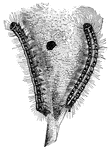
Tent Caterpillars
Tent caterpillars are moderately sized species in the genus Malacosoma in the moth family Lasiocampidae.…

Cordycep
The Sphaeria Robertsii a cordycep, a parasitic fungus "growing from the caterpillar of a New Zealand…

Caterpillar of the Gold-Tail Moth
Gold-tail moth is the common name of liparis auriflua. The caterpillar has three rows of tubercles along…
